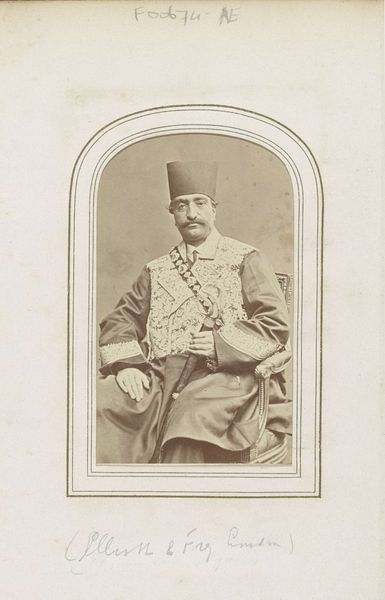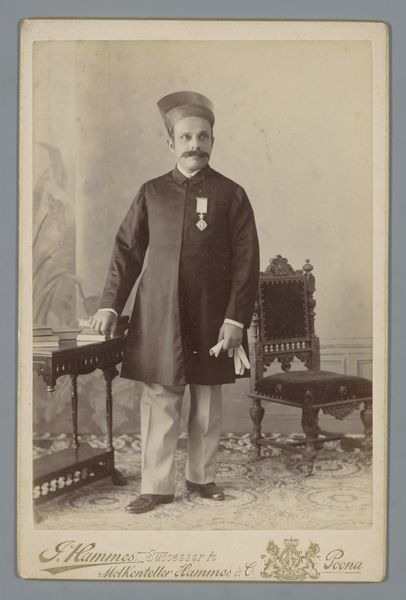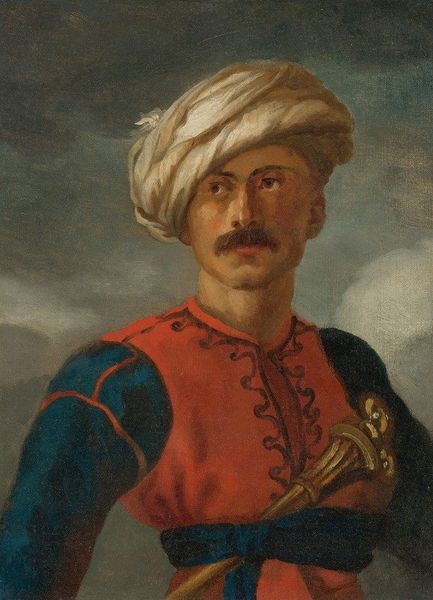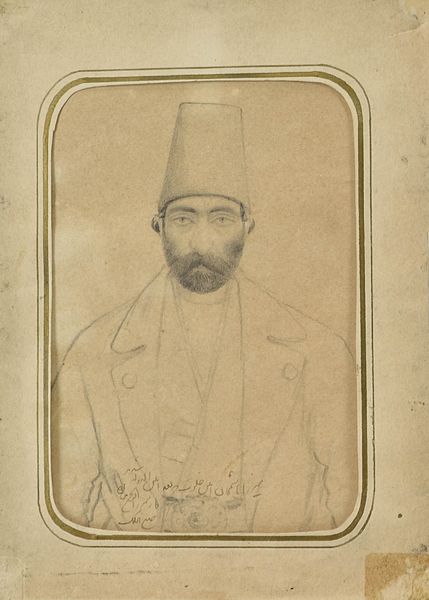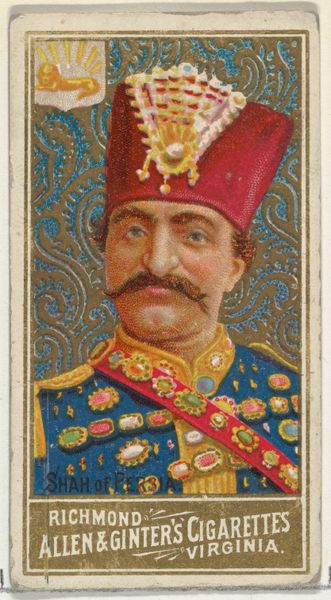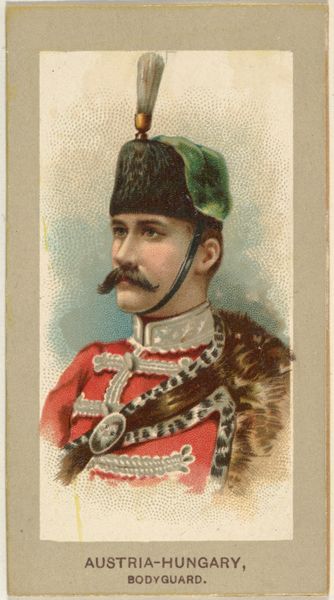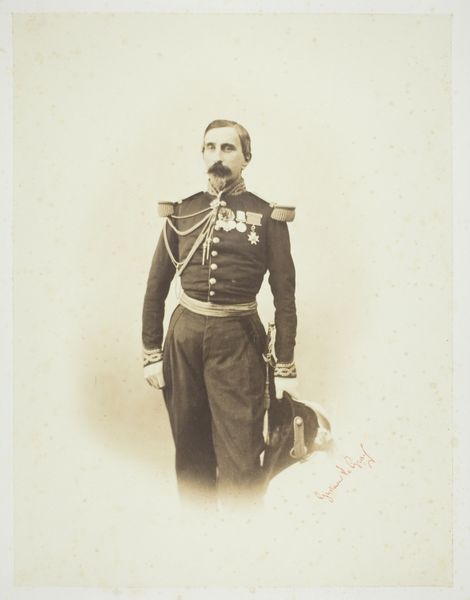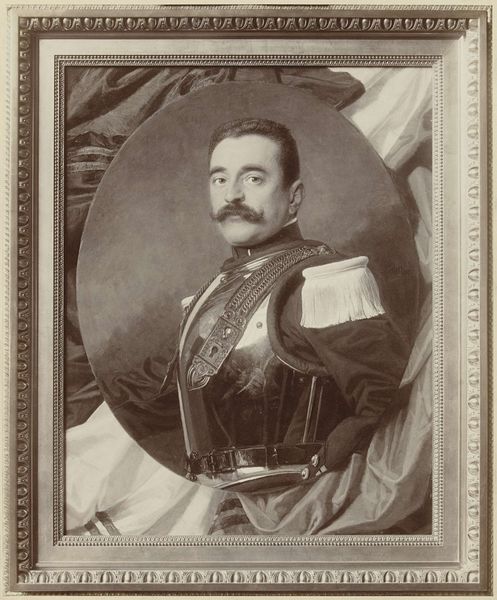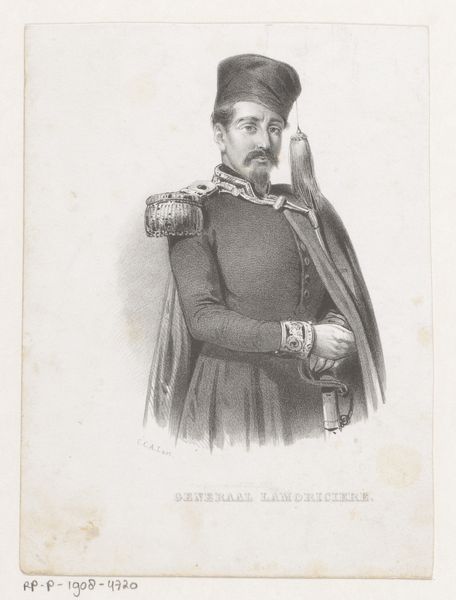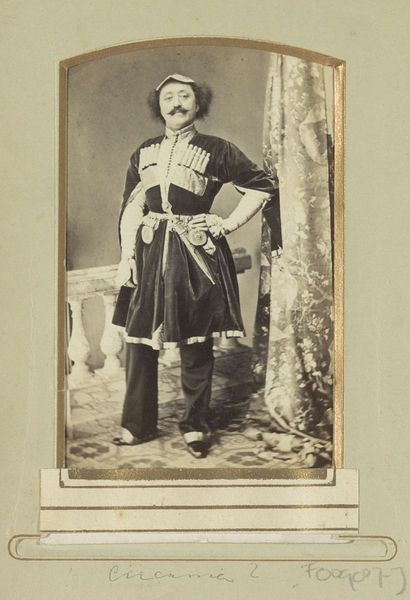
drawing, pencil
#
portrait
#
drawing
#
facial expression drawing
#
head
#
charcoal drawing
#
portrait reference
#
male-portraits
#
pencil drawing
#
pencil
#
animal drawing portrait
#
portrait drawing
#
facial study
#
portrait art
#
modernism
#
fine art portrait
#
realism
#
digital portrait
Dimensions: 40 x 27 cm
Copyright: Aydin Aghdashloo,Fair Use
Curator: At first glance, this piece evokes a sense of unfinished grandeur. Editor: We’re looking at "Cover Design, Unpublished Portrait of Naser-Al-Din Shah," a pencil and charcoal drawing by Aydin Aghdashloo created in 1990. Curator: The figure is imposing, staring straight ahead with that fantastic moustache, yet there’s something fragile about the incomplete lines, as if the subject is fading. The addition of the tile element lends itself to the composition, while adding complexity to the character’s presentation. Editor: Absolutely. The incomplete nature, combined with the subject being Naser-al-Din Shah, forces us to contemplate the Qajar dynasty's place in history and its often contested representation in contemporary Iran. Aghdashloo often explores memory and loss in his works. How does this portrait function within that larger context? Curator: The Lion and Sun emblem on the hat definitely pulls you in. It invites viewers to think about the lion, especially within the portrait. Perhaps he presents himself as powerful on the exterior while there's still so much underneath, unsaid, lost through political strife? Editor: That emblem carried such weight during the monarchy and continues to spark debate about Iranian national identity. Also, it makes one think of the unfulfilled promise of Modernism in Iranian history. It appears next to Naser al-Din, hinting at how his reign began reforms, and its subsequent suppression, created ripples through Iranian culture to this day. This imagery is important as a framework. Curator: And notice how the detailed rendering of the face contrasts with the sketched, almost ghostly outline of the body? That contrast enhances the dialogue between power, memory, and the representation of Iranian identity and state. Editor: It definitely underscores the idea of memory, loss, and perhaps the way history itself is constructed through fragments and incomplete narratives. A compelling visual statement, no? Curator: Very much so; a quiet rumination on power, memory, and the burdens of representation. Editor: Indeed, and it provides much insight into Aghdashloo's concerns, touching on historical memory within Iran’s evolving artistic and socio-political sphere.
Comments
No comments
Be the first to comment and join the conversation on the ultimate creative platform.
